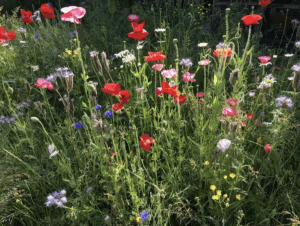At this time of year I like to look at the meanings behind some of our Christmas traditions. We’ve covered Holly, Ivy, Mistletoe, Christmas roses and Christmas trees and this year I thought I would look at why we have wreaths on our front doors.
Evergreens and cones
Decorated Holly (Ilex), Ivy (Hedera), Mistletoe (Viscum album) Conifers (many!) fir cones and nuts are all used to create the magical Christmas wreath to adorn our houses during the festive season but have you ever wondered how this come about?
American Movies
Movies featuring snowy yuletide scenes always have Christmas wreaths on the doors to welcome parcel laden visitors to the home! It looks so inviting and cosy that we have started doing the same in this country.
Ancient Roman tradition
Part of their New year celebrations from 31st of December to the 4th January involved the exchange of gifts which were originally branches of evergreens. They were called ‘stenae’ after the Goddess of health, Strenia. Perhaps this is why we toast ‘Good Health’ when sharing drinks with friends? To make the gifts more attractive it became customary to bend them into a ring or wreath. To show off that they had received these gifts the Romans would display them on their front doors to ensure a healthy household!
Make Your Own
Traditionally wreaths were given as gifts but we often buy them for ourselves. You can make your own very simply by bending and tying greenery together and then decorating with bows and baubles. To make it a little simpler you can obtain a ring made from twigs like willow (Salix) hazel (Corylus) or Birch (Betula) as a guide. Perhaps I should run a workshop!
Next month : Planning the Vegetable Garden
Cathie’s Gardening School Services now taking bookings for Spring
1.Horticultural consultancy teaching you in your own garden.
(There are three £99 discounted consultancy vouchers up for grabs in January for those of you that have read this!!!)
2.Cathie’s Garden Army team of horticulturists to transform your garden following a consultancy.




